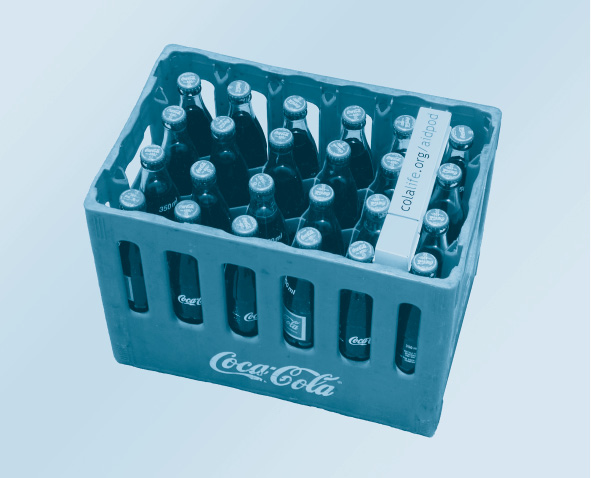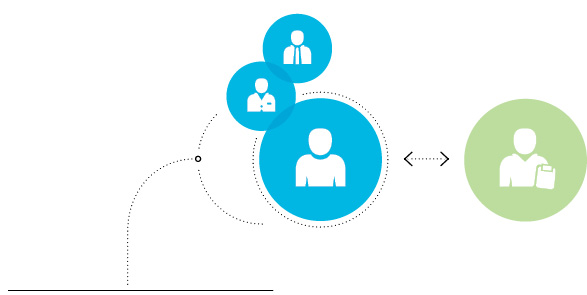Social design: delivering positive social impact
Kate Andrews
Intentionally or unintentionally, design and its processes have formed and styled the world we live in. Design surrounds everyday life to such an extent that designers and their processes have become largely invisible, vastly misunderstood and subsequently undervalued by society.
Service design is playing an important role in shifting these perceptions, by breaking down preconceived notions of creativity, actively illustrating the significant and wider social application of design, and involving more people in the design process.
It is common for design graduates to stand at their degree exhibitions, with little more than a 1m square board on show to illustrate three years of thinking, development and visual and physical output. Such con-straints perhaps breed a naive confidence that together with good grades, someone in the industry crowd might recognise the depth and direction of the work that the student displays.
From this perspective, there is much to query and explore in the broader role of design disciplines and how they are positioned alongside other disciplines. Designers possess more than simply an ability to style products; they are practitioners of an applied process of creative skills: identifying problems, researching, analysing, evaluating, synthesising and then conceptualising, testing and communicating solutions. Design, whatever the discipline, is not only about an end product, but rather a systematic process of identifying problems, then researching, creating, testing and implementing solutions.
One can look to the design profession for inspirations on style, but further investigation will show that design offers more than solely the creation and promotion of consumer goods. It is also possible to observe that designers have, through their broad and adaptable skill set, a service to offer to all areas of society. Such broader applications of design have variously been termed “innovation” and “design thinking”, two terms that have seen David Kelley’s IDEO and D-School gain kudos in the pages of Business Week.
Service design is playing an important role in shifting former perceptions, by breaking down preconceived notions of creativity, actively illustrating the significant and wider social application of design, and involving more people in the design process.
This broader application of design was consolidated in 2009 with the publication of Change by Design by IDEO CEO Tim Brown and The Design of Business: Why Design Thinking is the Next Competitive Advantage by Roger L. Martin. Design Thinking is now very definitely part of the social consciousness. But to what end?
Exploring the philosophical and historical position of “design thinking”, Robert O’Toole explains:
“Design thinking is taking shape as an attitude, as a methodology, as a philosophy. And perhaps also as an approach to learning and designing learning. Certainly if its methods are able to deliver on the promises, unlocking potentials, setting creativity free, but in a collective and collaborative context, aiming for durable and sustainable ends, then it more than envisages an exciting and viable future. How can this be tested? Imagine, discover, think, prototype, test, iterate, implement.”
As demand for, comprehension of, and the value of design thinking have evolved, a mass of socially motivated designers have united further. Thinking very differently about design, they are using strategic processes to tackle critical issues such as sustainability, unemployment, mental health, homelessness and poverty.
Employing the design process to tackle a social issue or with an intent to improve human lives is known as social design. Although the term is used in an array of contexts and subsequently put to very different uses, social design exists as a way of thinking about what, why and how design (product and/or process) can or does address the ever-changing needs of a society.
Whilst designers have worked with a social conscience, and with a view to modifying societal perceptions for many years, the evolution of this practice has previously appeared embryonic and unsustainable. Methodologies of co-design, social innovation and service design have dramatically broadened the application of “design thinking”, giving impetus and stability to a social design movement. One could argue that through these new methodologies, designers are better communicating the value of their creativity.
Social design exists as a way of thinking about what, why and how design (product and/or process) can or does address the ever-changing needs of a society.
In a 2010 feature, written for DesignObserver.com, designer Justin Kemerling explained the potential of interdisciplinary collaboration as a method for delivering positive social impact: “There’s a good chance [that] any given area has people who are good at graphic design, illustration, web design, programming, writing, event planning, connection making, community organising, public speaking and joke telling and want to get their hands dirty. Put all those together and you’ve got something that’s ready for positive impact.”
![]()
Recognising the growth of a potential new design movement, many designers have begun forging multidisciplinary networks with the aims of social improvement through design. Identifying social projects that could benefit from design expertise, and sharing examples of successful practice online, designers have begun to identify how their transferable skills could be utilised, and how intangible ideas can be visualised, communicated and implemented. One example of where a multidisciplinary design team successfully supported a socially focused project is with the story of ColaLife.

Model Aidpod in a Coca-Cola crate
In December 2009, as the decade closed, design journalist Alice Rawsthorn confirmed how the “new wave of social designers” had successfully redefined design as more than a creation of “things”, however, in her closing line she asked; “Was it enough? Sadly not. Let’s hope design does better in the next decade.” So, what’s next? How do we “do” better? How do we upscale the success of the previous decade and ensure a sustainable social role for design?
The tools and methodologies being developed by service designers provide a unique opportunity for all designers, whatever their discipline, to consider, approach and tackle social issues. As the processes of design become more transparent and accessible to audiences, clients and end users, a better understanding of design’s social value will emerge, helping to facilitate a broad and sustainable social application of design.

This is Co-Creative.
Case Study: ColaLife
In September 2008, ruralnet|uk Chief Executive Simon Berry presented an idea he had to ask Coca-Cola to utilise their global distribution channels to get medical equipment to dying children in Africa. Such a bold ambition demanded consideration of the project holistically, to identify the various systems Coca-Cola employed in its distribution networks and how it might be possible to utilise these for humanitarian purposes. This project would demand an innovative approach to work on new ways of addressing aims and objectives of all stakeholders involved with a view to ensuring maximum social benefit.
The project was heavily marketed through social media channels, something that helped bring together and facilitate the sharing of the different skills of designers interested in taking up this challenge. In effect, social media united participants in pursuit of this bold idea and helped turn it into something simple and accessible for a broad audience to understand, support and participate in. Simon was able to uncover people globally who had skills to aid the project’s development. In under a month the Facebook group grew substantially and Simon gained international press coverage. Within six months the project was branded as ColaLife, had its own website, voluntarily designed, had its own animated advert, and an online and offline community of multidisciplinary designers and other supporters backing the campaign.
In 2010 and 2011, ColaLife made it into the idea index of Buckminster Fuller Challenge. Simon and his partner Jane won an UnLtd* Award in June 2010. In the same month they both gave up employment to focus full-time on ColaLife on a voluntary basis. As of today there are local partnerships in Zambia to implement a pilot of ColaLife in 2011. Partners include UNICEF and the local Coca-Cola bottler SABMiller.
This success sprung from a number of designers beginning to think holistically about a given problem and collaborating together effectively through social media and web technologies in pursuit of an innovative and practical solution to a pressing social problem.